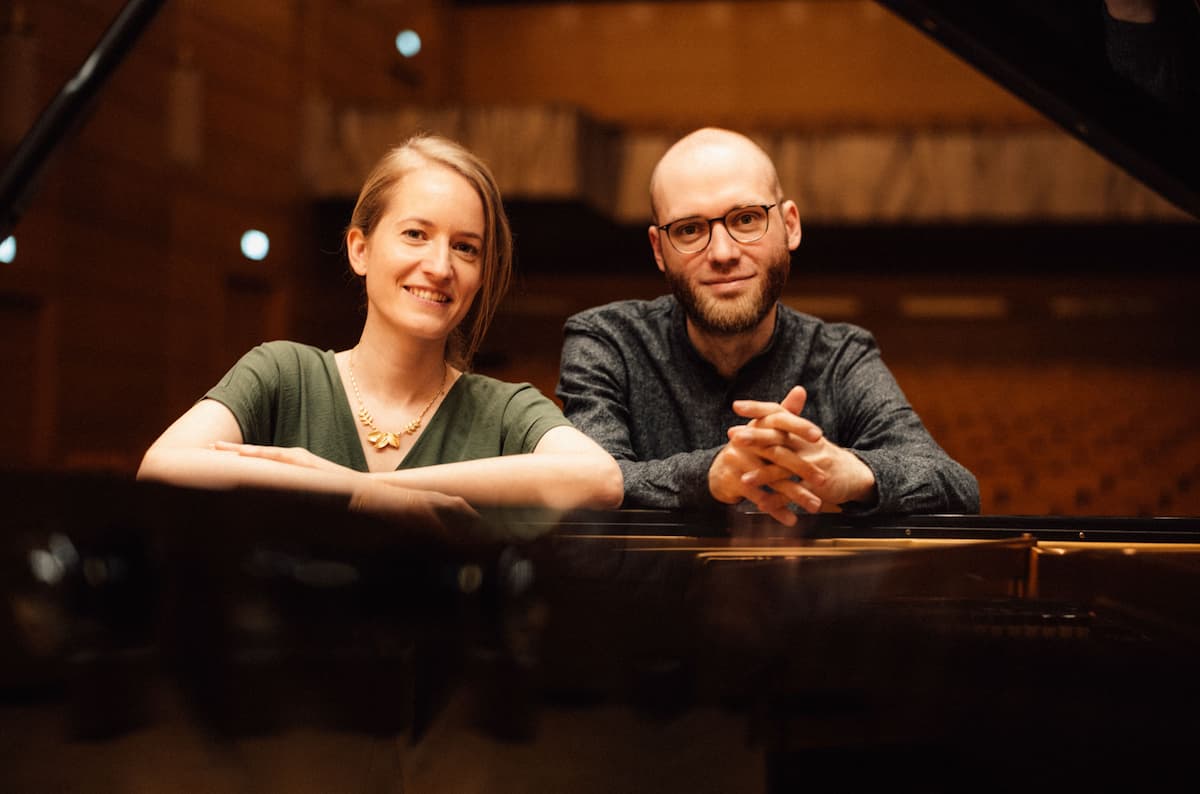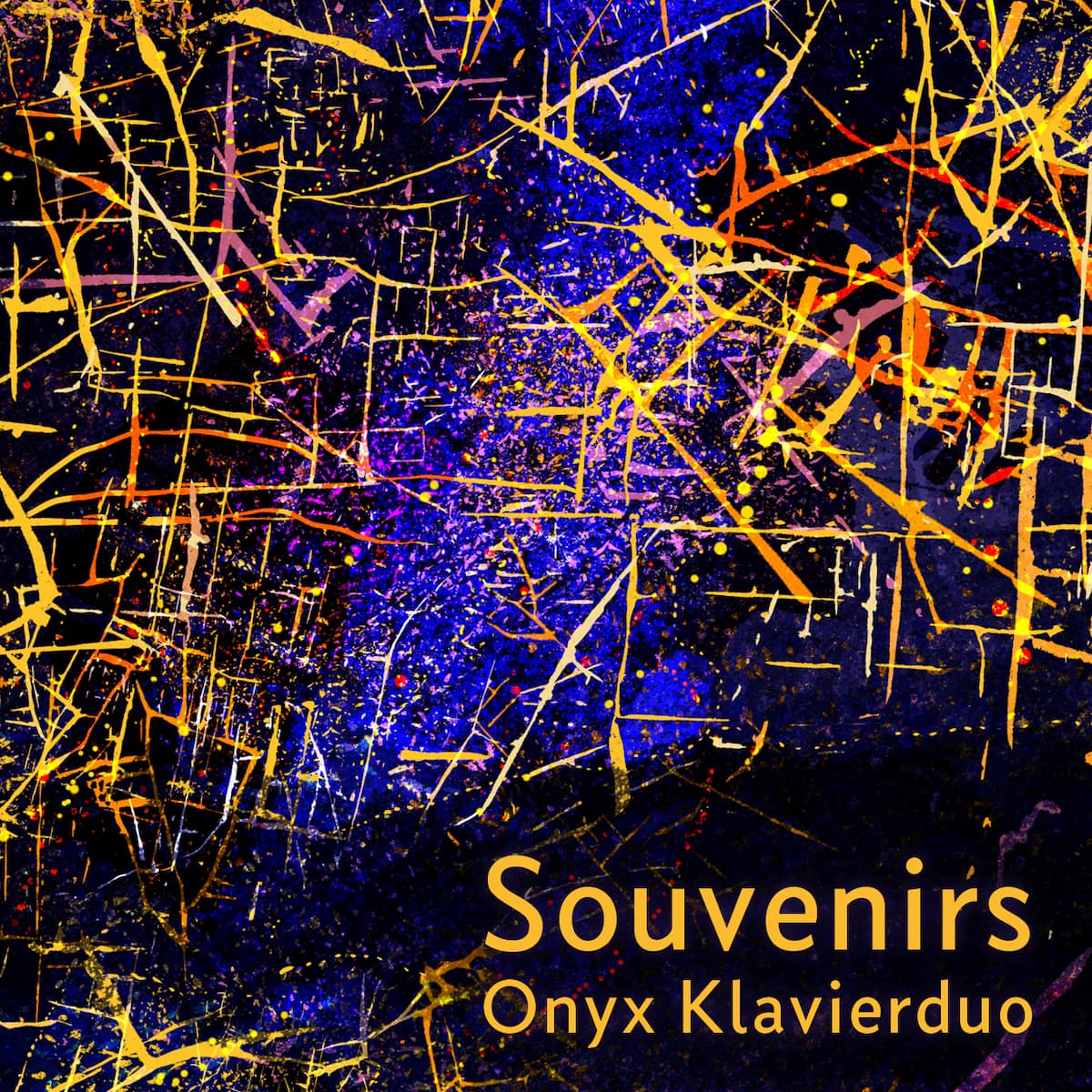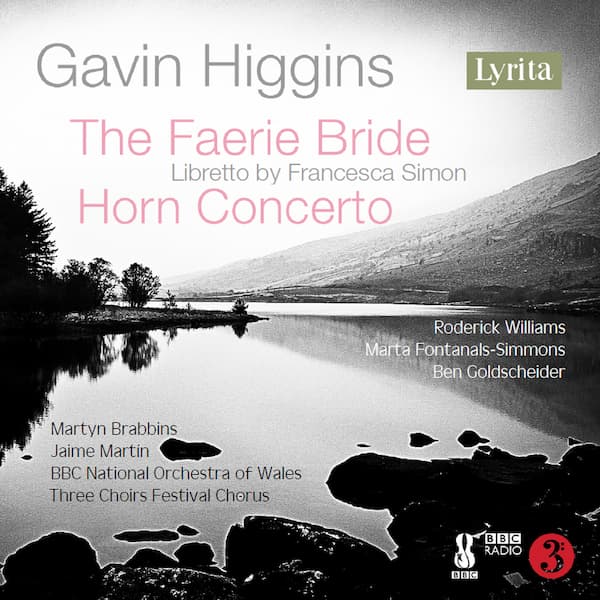One of the most wonderful ensembles in the world is the piano duo. More than just adding two more layers to any piano work, it adds up to 10 more layers. The German Onyx Piano Duo’s (Marie-Thérèse Zahnlecker and Jonas Gleim) debut recording brings an interesting grouping of composers: American, Dutch, French, and Austrian to create an album that is positively layered in sound.

Onyx Piano Duo (photo by Lukas Diller)
They start with Samuel Barber’s Souvenirs, a ballet suite. The work started as duets (4 hands, 1 piano) and premiered on NBC-TV in July 1952; Lincoln Kirstein of City Ballet suggested their orchestration.

One piano, four hands
The ballet suite had its world premiere in its orchestral form with the Chicago Symphony Orchestra under Fritz Reiner on 12 November 1953 and, three days later, with the New York City Ballet. Every movement is a dance: waltz, schottische, pas de deux, two-step, hesitation tango, and gallop. Barber wrote that he imagined the work as being performed in ‘the Palm Court of the Hotel Plaza in New York, the year about 1914’, and so the work is a memory, a souvenir, of past happiness.
Dutch composer Leo Smit (1900–1943) also evokes the year 1914, but not necessarily as a time of fond memory. Divertimento, written in 1942, at a time of great deprivation in The Netherlands, harks back to 1914 and the new musical influences of jazz and the world of sound invented by Debussy and Ravel. The final movement is a thwarted march: all authority at the beginning, but by the end, more frantic than ordered, before breaking off abruptly. The composer was to die the next year in a German concentration camp. Divertimento was one of his last completed pieces.
Leo Smit: Divertimento – I. Allegro ma non troppo
To go back in time to 1908–10, we touch on French composer Maurice Ravel (1875–1937) and his piano duet Ma mère l’oye (Mother Goose). In 1911, this was orchestrated and expanded into a ballet for Jacques Rouché. The Mother Goose suite draws on stories from 3 different French storytellers: Charles Perrault (1628–1703), the Comtesse d’Aulnoy (c1650–1705), and Marie Leprince de Beaumont (1711–80). The work is a ‘studied evocation of childhood’, and influences from Ravel’s contemporaries, such as Satie, can be found. The transparency of the fourth story, Les entretiens de la belle et de la bête, opens with more than a hint of Satie’s Gymnopédies.
At the work’s premiere, the two children for whom the piece had been written could only manage the first duet; the other four were taken over by two older children.
Maurice Ravel: Ma mère l’oye IV. Les entretiens de la belle et de la bête
The floating music of the 20th century comes to an end with the classical lines of a bit of Mozart. The last of his works for keyboard duet, the Sonata à quatre mains, K. 521, was written in 1787 for performance by himself and his student, Franziska von Jacquin. The writing doesn’t give priority to either voice: each takes a leading role before passing it back to the other player. The final movement harks back to the young Mozart’s traveling and borrows a theme from the Rondo of J.C Bach’s Sonata for four hands, Op. 15, No. 6. When the young eight-year-old Mozart was in London, he played piano four-hands with J.C. Bach before the King and Queen.
Wolfgang Amadeus Mozart: Sonata à quatre mains, K. 521 – III. Allegretto
The range of music on the recording, covering 165 years of piano duet, is a delight to hear. From dances to children’s music to Mozart … each work is an evocation of the past, of a memory, of something that was dear and is now gone, be it fairy stories or tea in the Palm Court, the new music of the turn of the century or memories of a childhood now far behind.

Onyx Piano Duo: Souvenirs
Immersive Sound Art: si0323
EAN13: 42 516 102 908 79
Release: 22 March 2024
Official Website
For more of the best in classical music, sign up for our E-Newsletter



